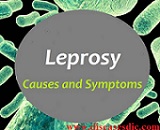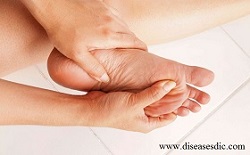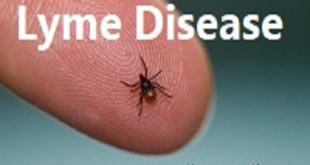What is leprosy? Leprosy, also known as Hansen’s disease (HD), is a chronic infectious disease caused by a Mycobacterium (Mycobacterium leprae) affecting especially the skin and marginal nerves. It is characterized by the formation of nodules or macules that enlarge and spread with loss of sensation and eventually paralysis, wasting …
Read More »Botulism – Definition, Risk Factors, Symptoms, and Prevention.
Definition Botulism is a rare but serious paralytic illness caused by a nerve toxin that is produced by the bacterium Clostridium botulinum and sometimes by strains of Clostridium butyricum and Clostridium baratii. Botulism is caused by botulinum toxin, a potent neurotoxin produced by Clostridium botulinum, a few strains of C. …
Read More »Athlete’s Foot or Tinea Pedis – Symptoms, Complications, and Treatment.
Introduction Athlete’s foot is a common foot infection caused by infection with certain types of fungi, called dermatophytes—these are the same fungi that cause ringworm and jock itch. Dermatophytes grow best in moist, damp places, which is why infection commonly spreads in the shower areas of gyms and swimming pools. …
Read More »Nocardiosis – Definition, Symptoms, Causes, Prevention and Treatment.
Definition Nocardiosis is a rare infection caused by the Nocardia asteroides bacterium. This type of bacteria can be found in the soil and water of regions around the world. People may become infected with this bacteria when they inhale it or when the bacteria enter an open wound. The infection …
Read More »Cellulitis – Risk Factors, Treatment, and Prevention.
Definition Cellulitis is a bacterial infection that affects the skin as well as the soft tissues under the surface of the skin. This kind of an infection usually occurs when bacteria enter normal or broken skin and start spreading under the skin into the soft tissues. This causes inflammation and …
Read More »Lyme Disease – Causes, Symptoms, and Treatment.
Definition Lyme disease is caused by a bacteria, Borrelia burgdorferi, that’s transmitted to humans through a bite from an infected black-legged or deer tick. Symptoms can occur anywhere from 3 to 30 days after the bite, and symptoms can be wide-ranging, depending on the stage of the infection. Lyme disease …
Read More »Trachoma – Epidemiology, Symptoms, and Prevention.
Definition Trachoma is a contagious bacterial infection which affects the conjunctival covering of the eye, the cornea, and the eyelids. It is often associated with poverty and lack of proper hygiene. Trachoma is caused by the Chlamydia trachomatis bacteria and is essentially totally preventable and curable. It is the leading …
Read More »Amoebiasis – Definition, Manifestations and Treatment.
Definition Amoebiasis is a condition in which your gut (intestines) becomes infected with the parasite E. histolytica. Entamoebae are a group of single-celled parasites (living things that live in, or on, other living organisms) that can infect both humans and some animals. There are at least six species of entamoeba …
Read More » Diseases Treatments Dictionary This is complete solution to read all diseases treatments Which covers Prevention, Causes, Symptoms, Medical Terms, Drugs, Prescription, Natural Remedies with cures and Treatments. Most of the common diseases were listed in names, split with categories.
Diseases Treatments Dictionary This is complete solution to read all diseases treatments Which covers Prevention, Causes, Symptoms, Medical Terms, Drugs, Prescription, Natural Remedies with cures and Treatments. Most of the common diseases were listed in names, split with categories.








